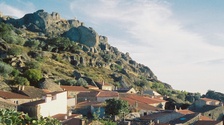Trouvez des professeurs en Anglais
安德烈 (Andrea)
Tuteur communautaireRadical in Chinese
Hello,
which is the character for writing thw word "radical" in Chinese? (I mean the radical in the chinese characters). I've looked in the dictonarie but it has many definitions without specifying very well.
Moreover, is there an online dictonary that tells me the radical of a character? for instance, I was reading a book and I found "楼" , I've searched for all the 3 radicals I see but I haven't be able to find it, finally I resorted to handwrite it on Google Translate to get the PinYin, but now I'm curious to know under what radical is this character listed.
12 sept. 2017 10:46
Réponses · 10
1
Basically you should know your radicals well; including their meaning. With this, you will generally able to recognize where the character is grouped under. However, there are cases when the components are the radicals themselves. For example, 東, 杳 and 杲. Should it be under 日 or 木? Since radicals can appear on the top, on the right, on the left or at the bottom, it is quite useless to say for sure. However, it is a trivial search to see which radical it belongs to. Also if you have a good dictionary, count the total strokes of the character and then go to the section where characters are grouped by total strokes; do a linear search and go to where it is being defined and you can see how it is grouped.
12 septembre 2017
1
你好,穆安文!
Radical is called “偏旁” (偏piān, inclined to one side;旁 páng,side)or “部首”(部bù, component; 首shǒu, head).
Here is an online dictionary you can use when you know how to type the word in the searching bar: http://xh.5156edu.com/html3/11951.html. As you can see from the second line in the grey part, it shows that 楼's 部首(radical) is 木.
Hope my answer helps!
12 septembre 2017
1
The "radical" that you speak here is "部首“or“偏旁”. For exemple, the radical of 楼 is the left part, which is "木".
How to find the right radical and then find the right character is a difficult part for Chinese learners. Generally speaking, according to the form of the characters, we can find the radicals on the top or the bottom or the left or the right of the character. For example, the radical of the character 怕 is 忄; the character 创 is 刂;旻 is 日;盎 is 皿。 In the other cases, we can regard the center part, the exterior part or the left top part as radicals.( for example : 办 for 力;固 for 口 ; 疑 for 匕.)
If we can find two radicals in the same character. We have to obey some rules: 1"top first, bottom second"; 2 "left first, right second; 3 exterior first, center second; 4 center first, top left second. If you haven"t found the right radical after obeying those laws, you can finally try some one-stroke radicals such as 一,丨,丿,丶,乛,乙。
Actually those rules don't seem quiet important. The most important part is to memorize all radicals which are in the dictionary. If you can recognize all the radicals, you can find the right character sometimes even though you don't obey those rules.
12 septembre 2017
Before I wrote this I saw Ke Gao's answer to your problem and I think it's right to the point so there was no need to repeat it, but since you also said you did not find it so I just put the looking up procedure here in case it may be helpful.
12 septembre 2017
Thank you very much for the detailed explanation, I know how to search for radical but often I get stuck in the search since I didn't know how to spot the right radical.
12 septembre 2017
Afficher plus
Vous n'avez pas encore trouvé vos réponses ?
Écrivez vos questions et profitez de l'aide des locuteurs natifs !
安德烈 (Andrea)
Compétences linguistiques
Chinois (mandarin), Italien
Langue étudiée
Chinois (mandarin)
Articles qui pourraient te plaire

The Power of Storytelling in Business Communication
44 j'aime · 9 Commentaires

Back-to-School English: 15 Must-Know Phrases for the Classroom
31 j'aime · 6 Commentaires

Ten Tourist towns in Portugal that nobody remembers
59 j'aime · 23 Commentaires
Plus d'articles
